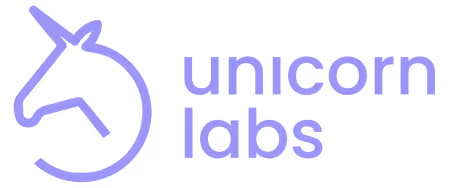The ROI of Leadership Development: Linking Training to Engagement and Growth
The Lesson That Changed How I Lead
Years ago, I had a boss who could silence a room with a single look. Every meeting felt like walking through a minefield. If an idea wasn’t theirs, it wasn’t worth hearing. I’d offer suggestions, and they’d roll their eyes or cut me off mid-sentence.
After a few weeks, I stopped sharing ideas altogether. I kept my head down, did what was asked, and stopped trying to make things better. The same person who had once thrived on creativity and initiative had become silent, disengaged.
I lasted four months in that role. And six months after I left, they implemented the exact marketing strategy I’d pitched on my first day.
That experience was painful, but it taught me the most important leadership lesson of my career: people don’t quit companies, they quit bosses. And they don’t disengage overnight; they disengage one dismissed idea, one ignored effort, one unacknowledged contribution at a time.
That realization has shaped everything I teach about leadership today, because the costs of poor leadership aren’t abstract. They’re measurable. They show up in turnover, productivity, and the culture you’re left with after good people quietly walk out the door.
The Leadership Gap No One Talks About
According to Gallup, managers account for 70 percent of the variance in employee engagement, the single biggest factor influencing whether people stay, leave, or give their best work. At the same time, 85 percent of employees globally are unengaged. That means most organizations are running at half power, spending 65 percent of their costs on talent that isn’t fully contributing.
We treat disengagement like a morale issue when it’s actually a management issue. When leaders aren’t equipped to coach, communicate, and empower, the organization bleeds invisible revenue through lost productivity, turnover, and missed opportunities.
Research shows that replacing a single mid-level employee can cost anywhere from 50 to 125 percent of their annual salary, while senior leadership losses can exceed 200 percent. Add the downstream effects, client churn, lower innovation, slower delivery, and the financial impact compounds fast.
Bad bosses create hidden attrition long before anyone resigns. People stop contributing their best ideas, they retreat from collaboration, and they mentally check out. And when that happens at scale, the entire business pays for it.
That’s why leadership development isn’t “soft.” It’s the most underutilized lever for hard business results.
Leadership development isn’t about theory. It’s about closing that gap between what your people could deliver and what they actually deliver. That gap has a name: the talent optimization gap. And it’s where the return on investment lives.

Why “Soft Skills” Drive Hard Results
Walk into any high-performing organization and you’ll feel it before you see it. Teams communicate openly, take ownership, and push ideas forward without waiting for permission. They operate with trust and psychological safety, not fear and compliance.
Those traits aren’t accidents; they’re the by-products of intentional leadership development programs designed to build real leadership skills, not just management habits. These programs teach leaders how to coach, empower, and communicate the “soft skills” that directly impact the bottom line through higher employee performance and stronger employee retention.
At Unicorn Labs, we define six interconnected levels that drive a team’s effectiveness: Psychological Safety, Empowerment, Effective Communication, Culture of Leadership, Purpose and Impact, and All-Encompassing Vision.
Each level builds on the last. Psychological safety fuels empowerment. Empowerment unlocks communication. Communication shapes a culture of shared leadership, which deepens purpose and aligns vision. When these levels are reinforced through consistent training programs, engagement follows naturally, and so does measurable ROI.
Because when you invest in developing leadership skills, you don’t just create better managers; you make the conditions where people perform at their best, stay longer, and drive the kind of employee performance that moves the bottom line.
Let’s unpack how.
Engagement and Retention: The Hidden Multipliers
I remember coaching a tech executive who boldly declared he could do everyone’s job better than them.
I was stunned. It was the epitome of toxic leadership. But what happened next was even more revealing: he genuinely believed his arrogance was part of a “strategic plan” to push his team harder.
That conversation stayed with me because it exposed something I see too often in senior leaders: the belief that pressure drives performance. In reality, it destroys it. Ego is one of the biggest killers of high-performing teams.
The impact of leadership development becomes clear when you contrast leaders like him with those who invest in development initiatives that strengthen empathy, coaching, and trust. The best business leaders see themselves not as protagonists, but as guides; they’re Yoda, not Luke Skywalker. They understand that their role is to empower others, not overshadow them.
When organizations invest in leadership development efforts, they equip managers to inspire, coach, and connect, transforming ego-driven environments into cultures of growth. Through immersive, in-person training and reflective practice, leaders learn to align their behaviour with their organizational goals, fostering engagement across teams, stakeholders, and direct reports alike.
And the numbers back it up. According to Gallup, highly engaged employees achieve:
- 14% higher productivity,
- 23% higher profitability, and
- 10% higher customer loyalty.
They also experience 78% less absenteeism and up to 51% less turnover in low-turnover organizations (and 21% less in high-turnover ones).
That’s not just a culture win, it’s a competitive advantage that translates directly to the bottom line.
That’s why leadership development isn’t just about making people nicer; it’s about aligning leaders with your organizational goals so they can build cultures where people stay, stretch, and succeed.
And when leaders learn to coach instead of command, holding one-on-ones that explore career goals, provide real-time feedback, and connect daily work to purpose, they create environments where people stay and thrive. Retention becomes an outcome of culture and connection, not compensation. Because the truth is simple: people don’t quit companies that invest in them, they quit when their leaders stop trying to.
From Engagement to Performance and Revenue
Employee engagement isn’t just about happiness; it’s about employee satisfaction, purpose, and the discretionary effort people bring when they feel seen, supported, and trusted. That willingness to go beyond the job description is what drives innovation, customer loyalty, and ultimately, revenue growth.
But this kind of engagement doesn’t happen by accident. It’s the result of intentional leadership development training that builds the foundations of trust, clarity, and autonomy. That’s why I developed the Six Levels of High-Performing Teams, a framework that gives leaders a roadmap for where to start.
Teams with high psychological safety are more likely to share ideas, experiment, and recover from failure faster, behaviours that directly influence business outcomes. These conditions don’t just improve morale or well-being; they shorten product cycles, improve customer experience, and strengthen profitability.
Consider Slack’s origin story: a failed video-game startup that turned its internal chat tool into a billion-dollar platform. That pivot only happened because the leadership created an empowered environment where engineers felt safe to challenge assumptions and propose change. Empowerment turned failure into innovation, and innovation into measurable ROI, a clear demonstration of the ROI of leadership development programs.
The same pattern appears across industries: Airbnb’s Superhost program, Spotify’s agile Squad Model, or Ritz-Carlton’s $2,000 Rule that empowers every employee to create guest delight. In each case, leadership development built trust, autonomy, and accountability, the hidden engines of sustainable business growth.
This is also where executive coaching plays a critical role. High-performing and high-potential leaders benefit from guided reflection, helping them turn insight into consistent behaviour that scales across teams. These coaching relationships foster resilience, clarity, and sustainability, ensuring leaders don’t just perform in the short term but thrive for the long haul.

Measuring the ROI of Leadership Training
Executives often ask, “How do we prove this?” The answer is to measure the right things in the right order. Leadership training ROI isn’t a single number; it’s a chain reaction — from culture to capability, and from capability to financial results.
1. Leading Indicators – Engagement and Capability.
Start with baseline metrics: engagement scores, pulse surveys, employee satisfaction, retention rates, and 360° feedback on leadership behaviours. Track improvements quarterly to see momentum before it shows up in financial results.
2. Operational Indicators – Team Performance and Agility.
Measure cross-department collaboration, project speed, decision-making efficiency, and error reduction. Teams with clear empowerment frameworks and psychological safety complete projects faster and with fewer escalations.
3. Financial Indicators – Growth and Profitability.
Translate those gains into revenue outcomes. Lower turnover reduces hiring costs. Higher engagement increases employee satisfaction, innovation, and customer retention. According to McKinsey & Company, organizations with strong leadership pipelines are 2.4 times more likely to hit their financial targets.
When these layers are connected, leadership behaviours to team outcomes to business metrics, ROI stops being abstract. It becomes a dashboard conversation, one where leaders can clearly see how investing in people creates sustainable growth, profitability, and well-being across the organization.
The Framework: From Learning to Doing
Leadership development fails when it ends in theory. The ROI emerges only when learning is embedded into daily practice.
In Unicorn Labs programs, managers move through a learn–apply–reflect cycle:
- Learn: Acquire the mindset, toolset, and skillset, from emotional intelligence to delegation frameworks.
- Apply: Run real-world experiments: facilitate a “team canvas,” host a feedback round using the SBI Framework, or redesign team roles through Job Crafting.
- Reflect: Collect feedback, measure shifts in engagement and performance, and adjust.
This iterative approach transforms leadership from an event into a habit. Managers aren’t just attending workshops; they’re re-wiring how their teams communicate, decide, and grow. A good leadership program doesn’t entail just attending a webinar, but one that equips leaders to apply their learnings immediately.
(If you’re building a development program, check out How to Conduct Soft Skills Training for actionable ways to design sessions that actually change behaviour, not just share information.)
As one leader put it during a post-program debrief: “I came in looking for tools. I left realizing I’m the tool my team needed to grow.”
Building the Business Case: For CEOs and HR Leaders
For many executives, the business case for leadership development comes down to simple math. Every leader influences a network of five to fifteen people. If each of those leaders increases engagement and output by even ten percent, the compounding effect across the organization can rival the ROI of a major product launch.
But the case isn’t just financial, it’s cultural. In today’s workplace, people aren’t loyal to titles or offices; they’re loyal to growth. Investing in leadership development programs sends a clear signal: this is an organization where people can evolve. It builds internal mobility, strengthens alignment, and ensures leadership behaviours reflect the company’s values at every level.
Forward-thinking HR and people leaders are pairing people analytics with leadership metrics to make this visible. They’re tracking how trained managers correlate with lower turnover, higher engagement, and stronger performance reviews. The results create a powerful feedback loop: develop leaders, measure the impact, refine the approach, and scale what works.
Ultimately, this is how high-performing organizations turn leadership from an abstract concept into a measurable advantage, one that drives both culture and the bottom line.
The ROI Equation in Practice
If you want a tangible way to frame the ROI, consider this equation:
ROI = (Performance Gain + Turnover Savings + Engagement Lift × Productivity Multiplier) / Program Cost.
A company that invests $250,000 in leadership development for thirty managers could easily see returns like these within a year:
- Performance Gain: A 10 percent productivity increase across 200 employees ≈ $1.2 million in added output.
- Turnover Savings: Five fewer departures at an average salary of $90K ≈ $450,000 retained.
- Engagement Lift: Higher morale reduces absenteeism by 5 percent ≈ $100,000 in recovered time.
Total ROI ≈ 7× the investment — and that’s conservative. Because once leadership capability compounds, those gains repeat every quarter without new spending.
Why Leadership Is the Ultimate Growth Strategy
Most organizations chase growth through external levers, new products, acquisitions, or technology. But as we’ve seen, the most reliable lever is internal: developing the people who lead your people.
Leadership development is the only investment that multiplies across every metric:
- It fuels engagement, which drives retention.
- Retention preserves knowledge, which sustains performance.
- Performance accelerates innovation, which delivers growth.
It’s a virtuous cycle that begins with one decision: to treat leadership not as a promotion, but as a profession.
The Takeaway
In a world obsessed with strategy decks and AI integrations, it’s easy to forget that the future of business still runs through human beings. When leaders grow, so does everything else.
The ROI of leadership development isn’t a mystery, it’s measurable, repeatable, and undeniable. Train your managers to lead with clarity, empathy, and courage, and you don’t just build better teams; you build a self-sustaining growth engine.
Because the truth is simple: if your people aren’t developing, your organization isn’t either.
Liked this blog? Check these out:
- The True Cost of Poor Leadership – Discover how ineffective leadership quietly drains engagement, innovation, and profit, and what you can do to fix it.
- The Coach Approach: How to Go from Boss to Leader – Learn how to shift from managing tasks to coaching people, the key to unlocking your team’s full potential.
- High-Performance Cultures: What They Are and How to Build One – Explore the building blocks of a culture that fuels engagement, accountability, and growth.
Now that you have mastered how to manage conflict - what is your plan of action for making an impact with your team?
Now that you have mastered how to create an environment of empowerment via the 3-P's - what is your plan of action for making an impact with your team?
Developing Your Communication, Empathy and Emotional Intelligence skills is start. What is your plan of action for implementing your learnings within your your team?
Now that you understand the differences in these titles - what is your plan of action for what you learned?
Assessing your team's behaviors is a start - but do you have a plan of action for the results?
Now that you have mastered the art of decision making - what is your plan of action for making an impact with your team?
.png)
A DISC Behavior Assessment is the best way to understand your team's personalities.
Each DISC Assessment includes a Self Assessment and DISC Style evaluation worksheet

-23.avif)







.webp)









